Visiting West Africa felt like a special calling. As a Haitian whose ancestors derived from the region, absorbing the history in person would be a spiritual rite of passage, I told myself. The fashion culture was another strong pull; as a writer committed to covering style from a global perspective, I couldn’t wait to learn about the rich sartorial traditions of the continent. So when a friend invited me to join her at the 15th edition of Dak’Art Biennale, I jumped at the opportunity to experience Senegal. While the event was postponed at the last minute, there was still plenty of art, history and fashion to absorb, so with the eagerness of children on a field trip, I boarded a plane for the “Land of Teraanga.”
Before traveling to a new place, I always watch related documentaries (Anthony Bourdain: No Reservations is usually where I start) to learn as much about the culture from a distance. This exercise also helps create a loose itinerary, informing me of what I need to prioritize. In the case of Senegal, there were some non-negotiable items on the list: exploring Dakar’s markets to appreciate the tapestry of handcrafted goods, diverse textiles and rich spices Senegal has to offer; touring monumental sites and art institutions to better grasp the impact of the country’s colonial past; and of course, eating everything in sight to savor the fruits of the land and the sea.
With this in mind, my family and I spent ten colorful days in the warm, welcoming and soulful land of Senegal. Here’s what my condensed schedule looked like as a happy tourist and fashion editor:
Day 1 — May 15, 2024
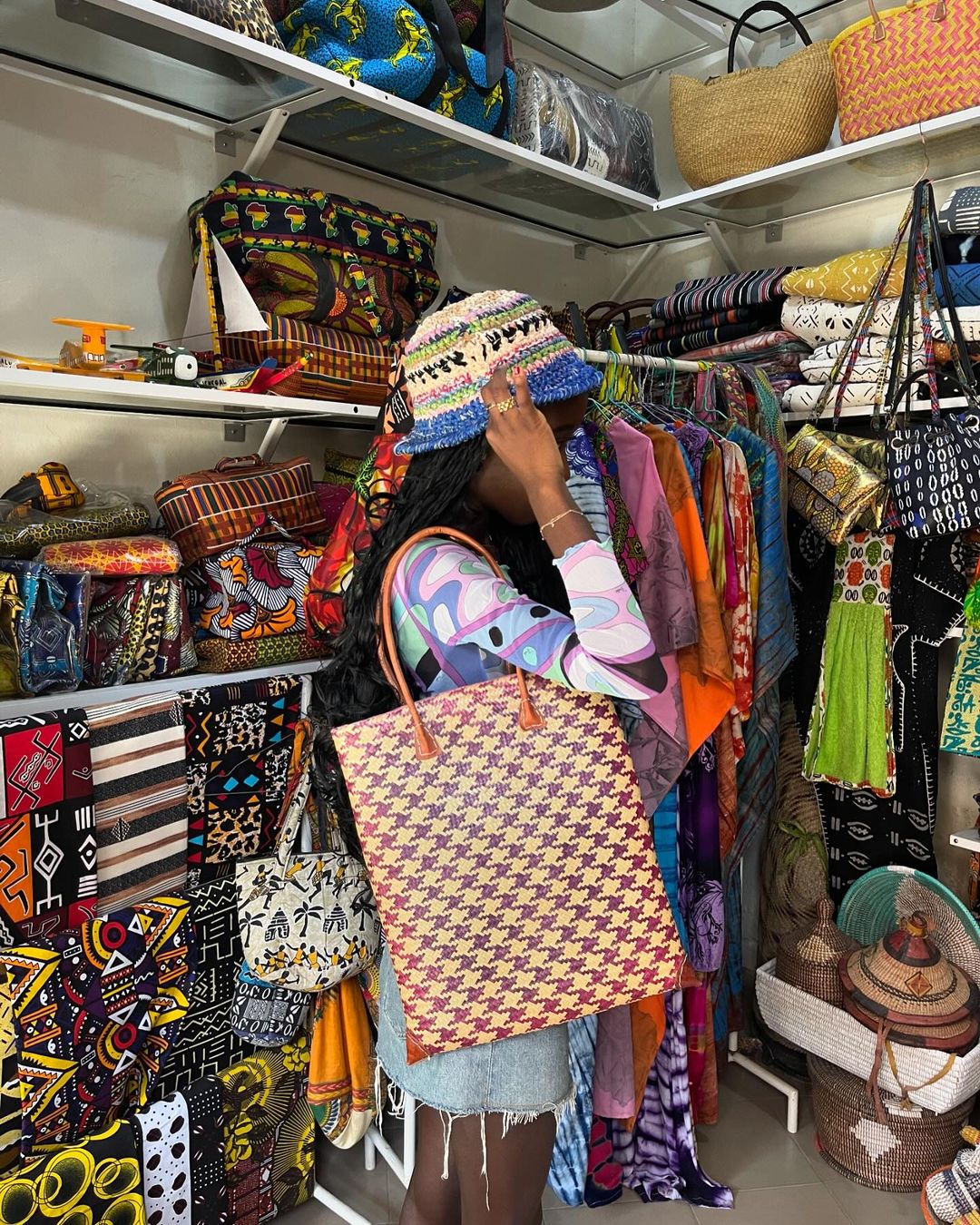
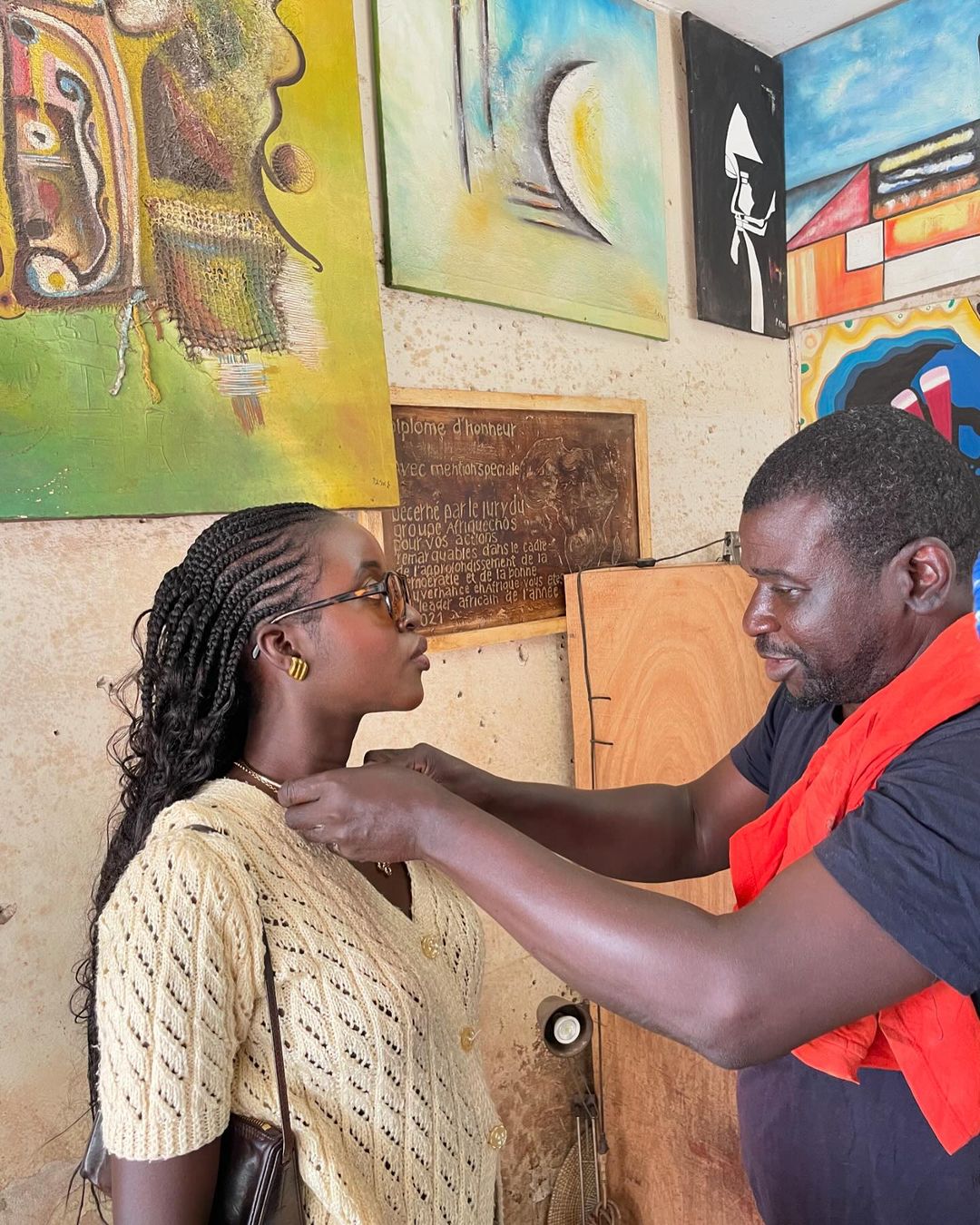
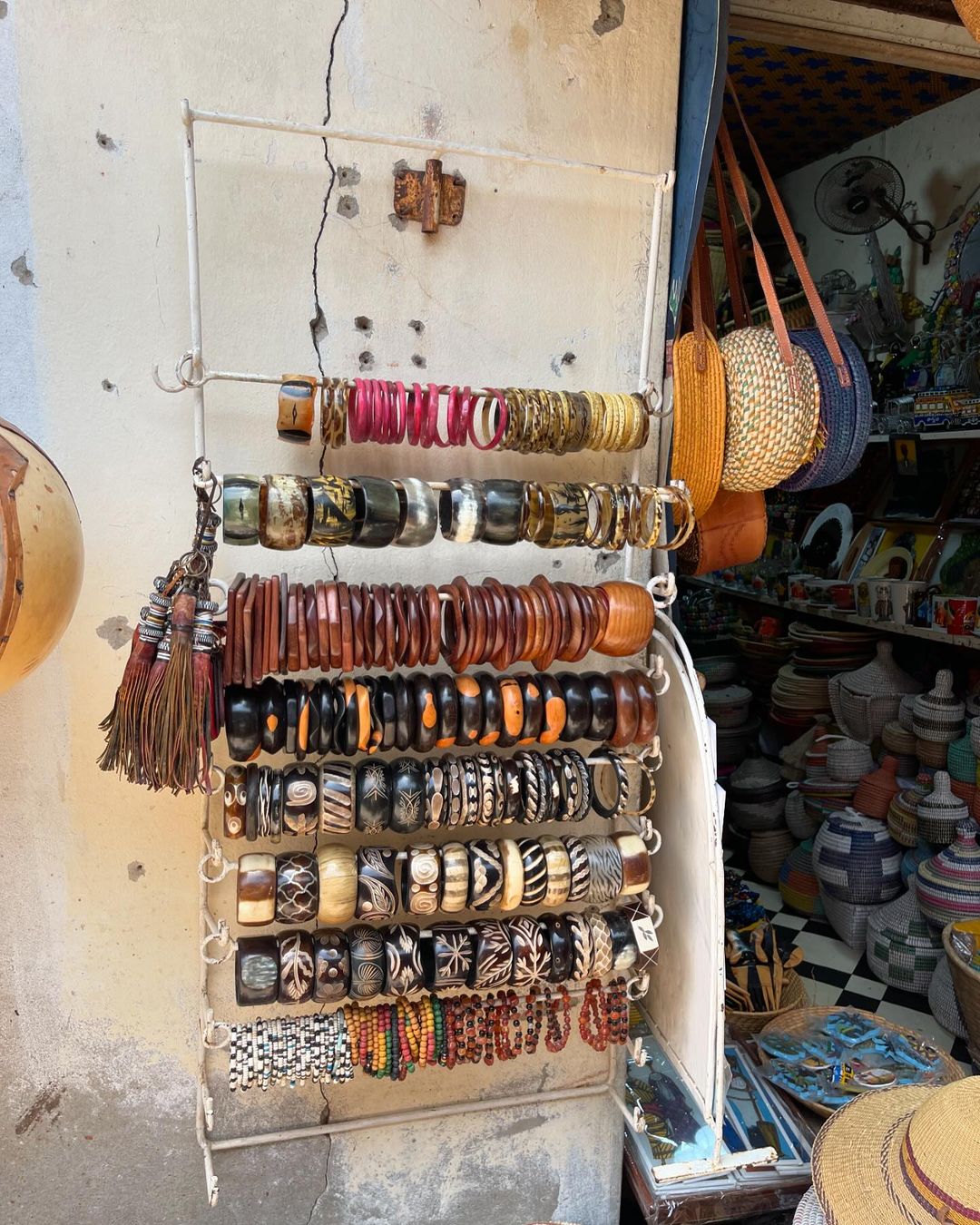
On the first day, we hit the ground running with a trip to Marché Soumbédioune, one of the smaller shopping destinations for artisanal souvenirs such as homewares, leather goods and decorative sculptures. As you wander from stall to stall, you can watch the makers sew clothes, weave together raffia rolls or polish jewelry. Unlike other markets, the pace here is generally unhurried, which conveys a village feel, but this will not keep some vendors from following you around if you even so much look at something in their shop. It’s all pretty harmless, but you should prepare for it.
Following that eventful morning, we headed downtown to Restaurant Chez Loutcha for its famous plate of the day. It turned out to be the country’s national dish, thiebou jenn (or thieboudienne)—savory fish over rice and vegetables simmered in tomato sauce. Needless to say, it was delicious. It’s a local’s favorite for a reason. The rest of the evening brought us to Galerie Cécile Fakhoury, where the artist Na Chainkua Reindorf had her work on view.
Day 2 — May 16, 2024
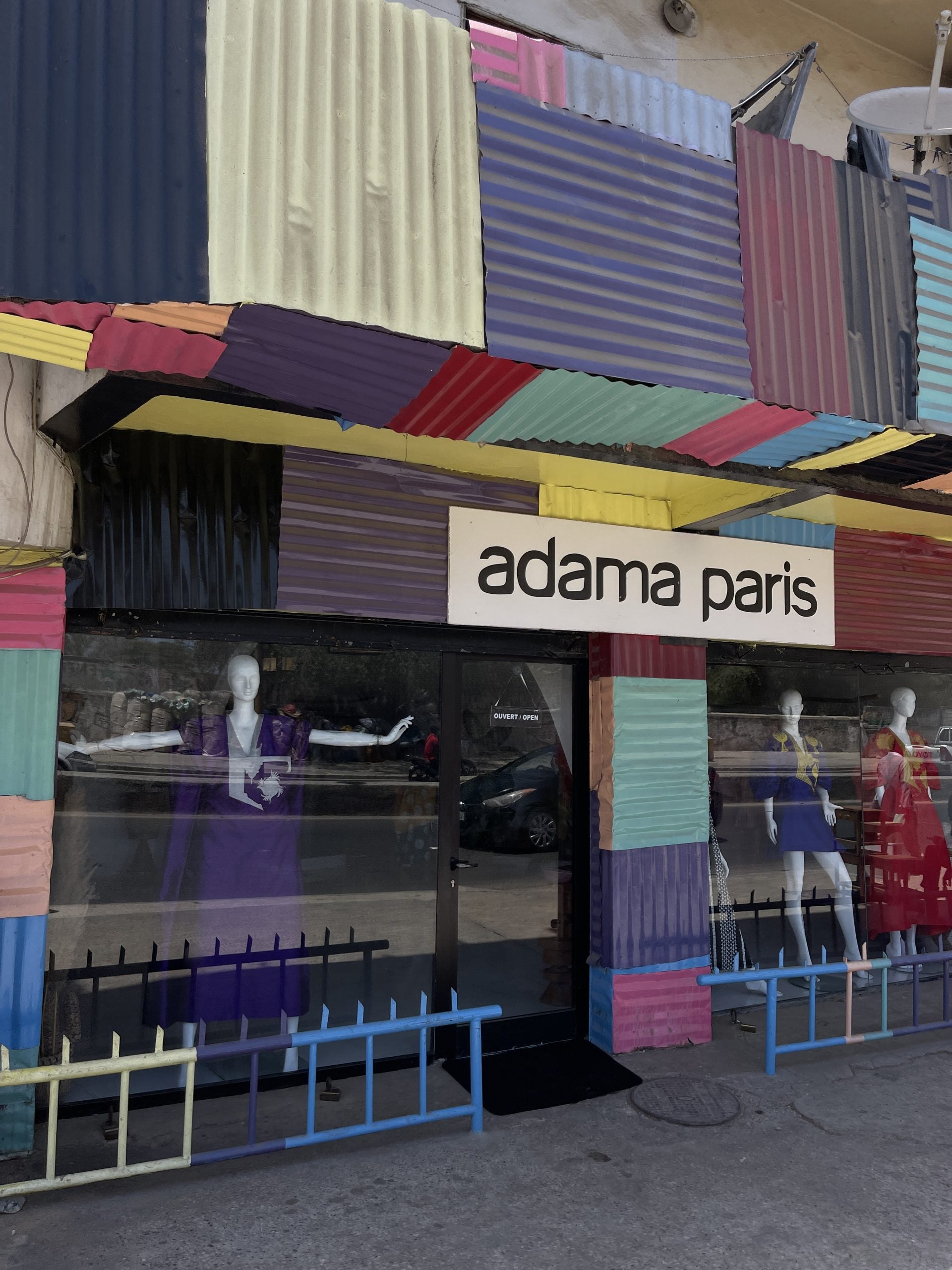
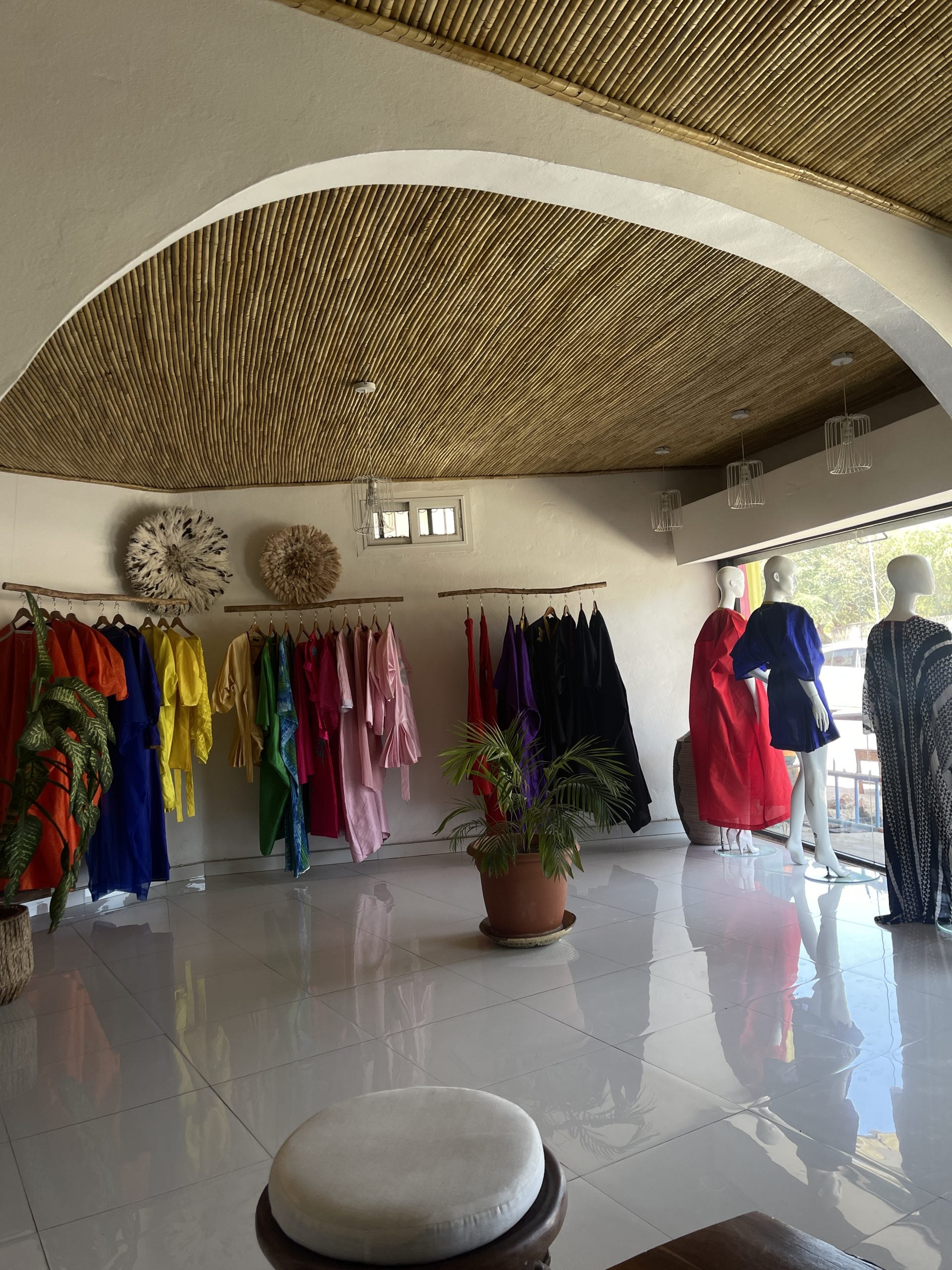
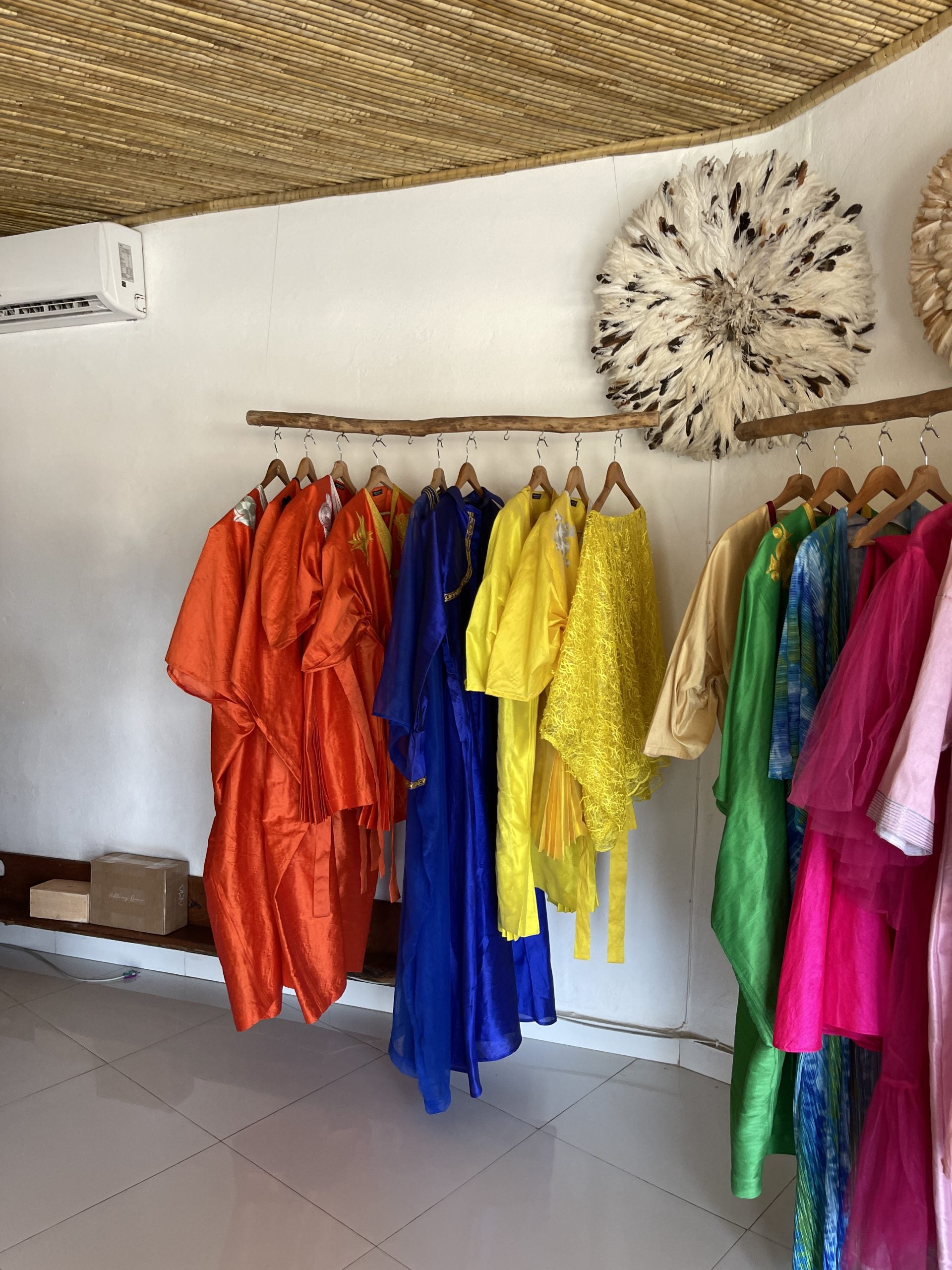
For a change of scenery, we started Day 2 at Adama Paris, a clothing shop renowned for its chic and colorful resort wear. The founder Adama Amanda Ndiaye is also behind the highly influential Dakar Fashion Week, which she launched in 2002 to champion Senegalese designers and turn the city into a fashion capital. Her store aptly captures the buoyant energy of Dakar, boasting vibrant boubous, elegant caftans and breezy blouses.
After the shopping trip, we reported to the annual expo of African literature (African Art Book Fair) at Place du Souvenir Africain. Through a series of talks and exhibits, the event tackled pressing political questions while uplifting African editorial practices. We felt inspired by the two panels we listened to, one discussing the role of libraries in preserving history and the other exploring the creation of zines as a form of activism. The learning continued at the Henriette-Bathily Women’s Museum, where I discovered the history-making actress Isseu Niang.
Later that evening, we enjoyed a casual dinner at Dibiterie Haoussa Chez Ali, which served up some mouth-watering roasted lamb (another specialty of the country) with raw onions and hot sauce. This was before heading to the Blaise Senghor Cultural Center for an art show staged by Black Rock Senegal, an artist-in-residence program started by the illustrious Kehinde Wiley. The night, which already took us to an intellectual high with its thought-provoking art, was made even better by the surprise performance of the Nigerian artist Victony.
Day 3 — May 17, 2024
Another day, another Senegalese market. This time, we explored the frankly chaotic Marché Sandaga, Dakar’s biggest shopping center. Originally contained to a three-floor building near the Place de L’Indépendance, vendors have since spilled into the surrounding streets, hawking everything from jewelry, fruits, fabrics, TVs, jeans and jersey shirts—some of them authentic, others counterfeits. It’s wise to keep your belongings close and be aware of your surroundings as pickpocketing is a frequent occurrence. Despite these drawbacks, we successfully found some original handmade linen shirts, boubous and sculptural jewelry.
Next up: Grand Mosque of Dakar, a majestic religious building that welcomes people of all faiths. We watched the locals perform a prayer ritual before kneeling on their towel to respond to the call. When lunchtime came, we found ourselves at Le Gallard Restaurant for the plate of the day: yassa chicken (another excellent Senegalese dish). Feeling content, we spent the rest of the day vegetating at Surfer Paradise, a surf school, beach club and restaurant delivering some of Dakar’s best ocean views.
Day 4 — May 18, 2024
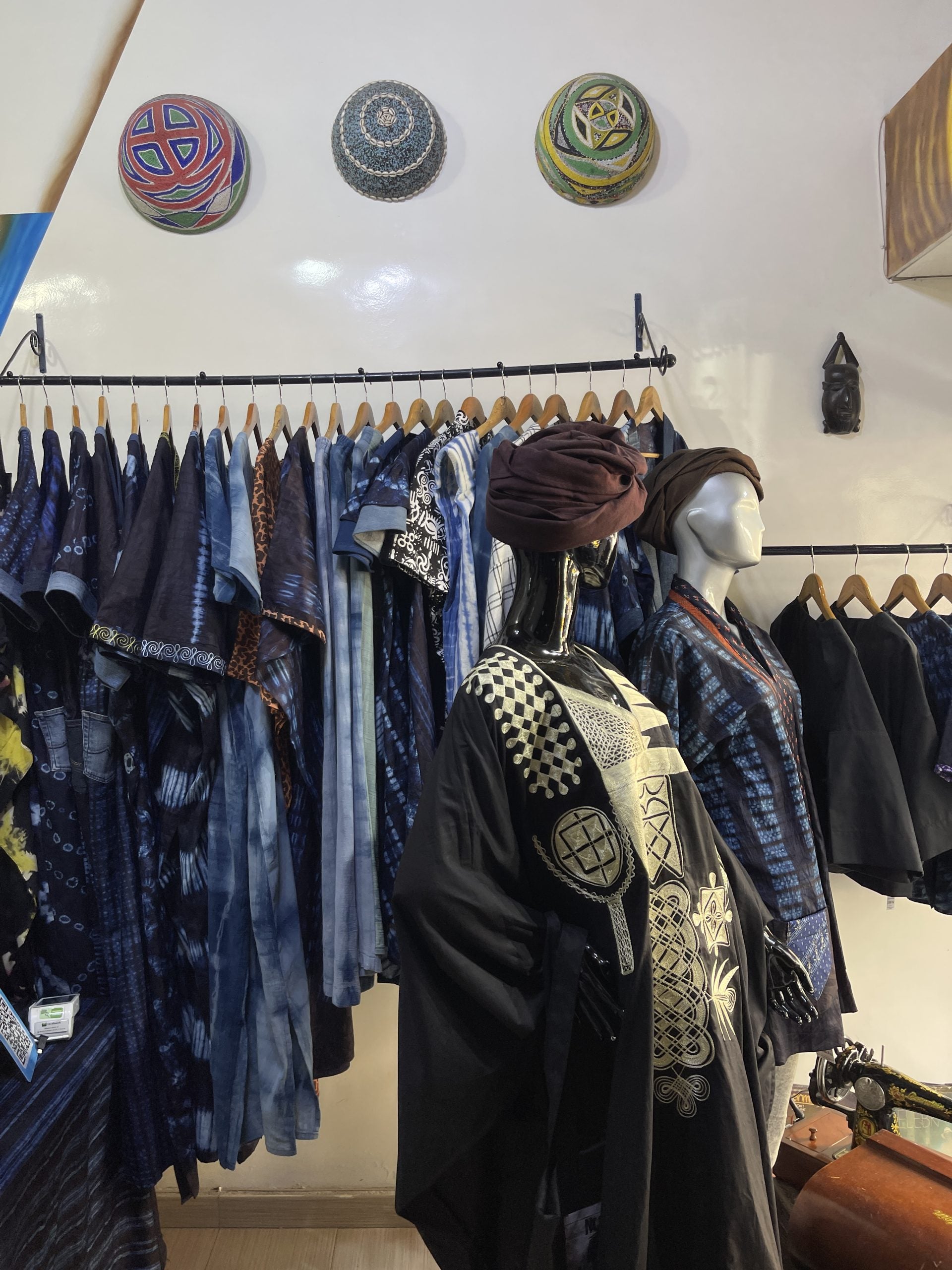
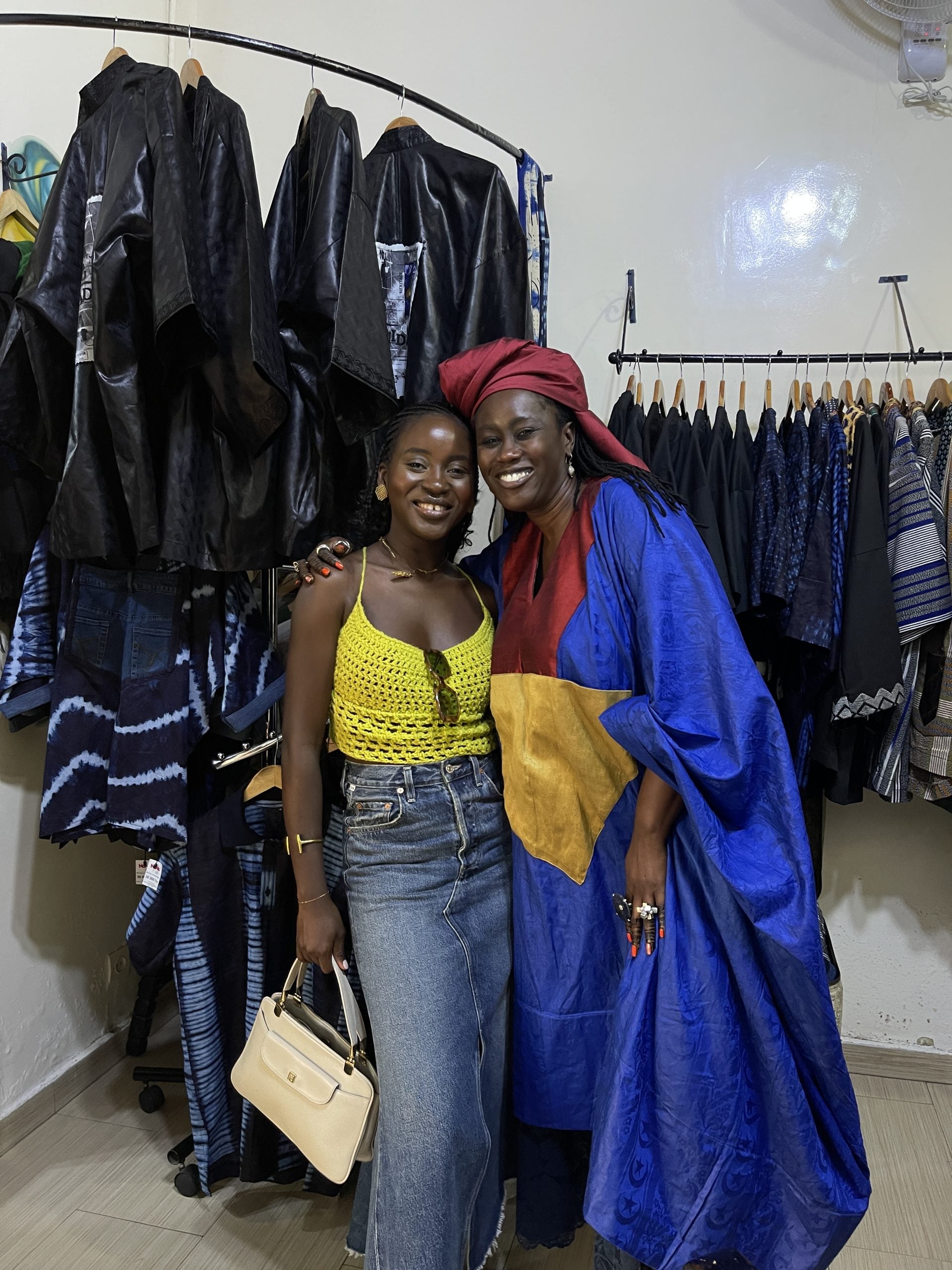
On Day 4, we took things easy with a visit to the African Renaissance Monument, the highest (not tallest) statue on the continent commissioned by then-president Abdoulaye Wade in 2010. More than a landmark, the 49-meter-high bronze statue signals a new era for the still-newly independent nation, commemorating its emancipation from France and symbolizing hope for Africa. Inside there is a museum where you can read all about its construction and take an elevator to reach the top.
The rest of the day brought us back downtown, where I visited NuNu Design By DK, founded by textile historian, photography collector and fashion designer Marie Madeleine Diouf. From tie-dye kimonos to garments incorporating recycled jeans, Diouf has turned her shop into a veritable statement of Senegalese sartorial identity.
Hungry for more art, we settled at the Leopold Sedar Senghor French Institute, where we spent hours reading at the library, checking out the exhibits, and indulging in a satisfying buffet at the in-house restaurant, Bidew.
Day 5 — May 19, 2024
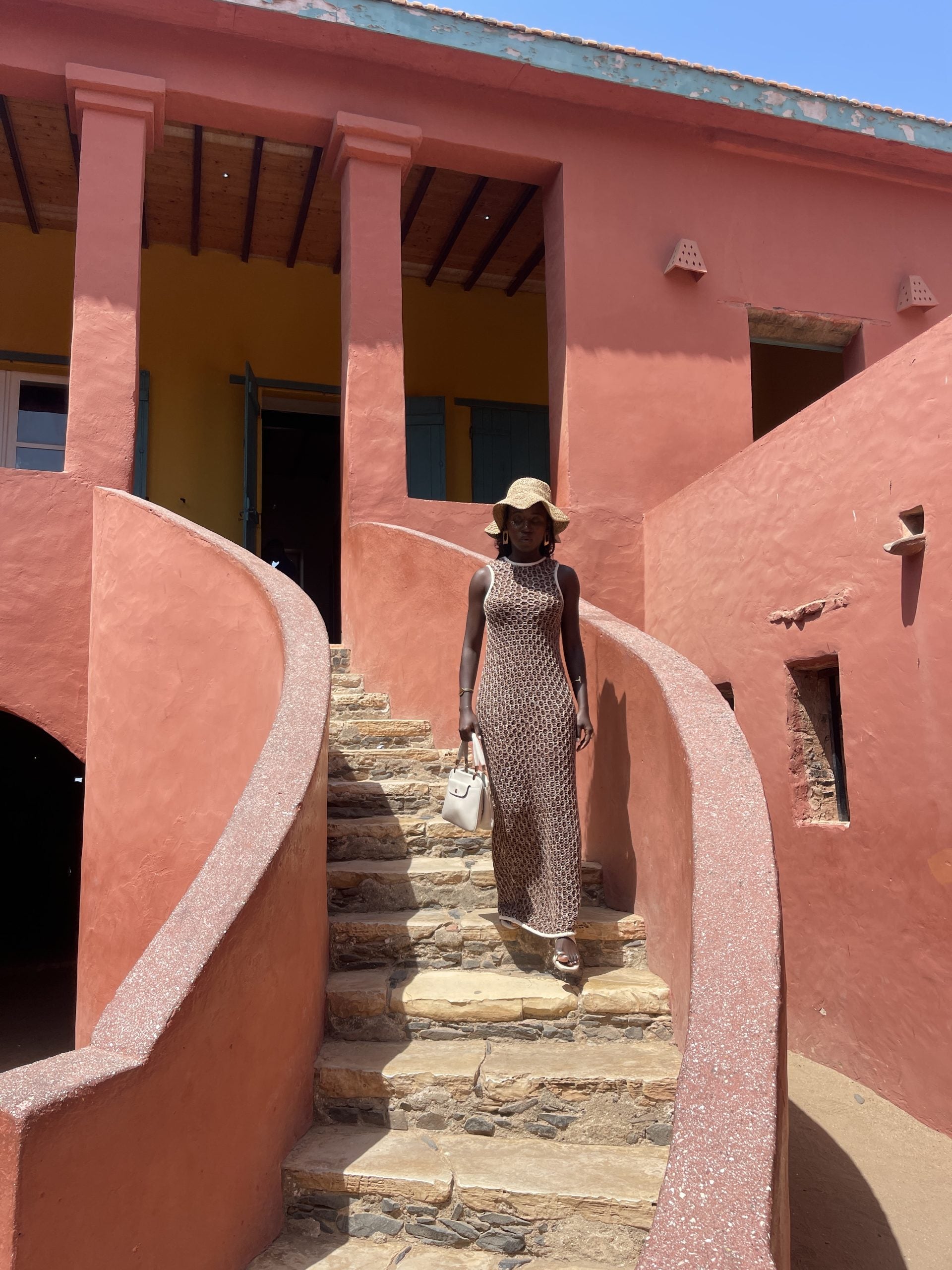
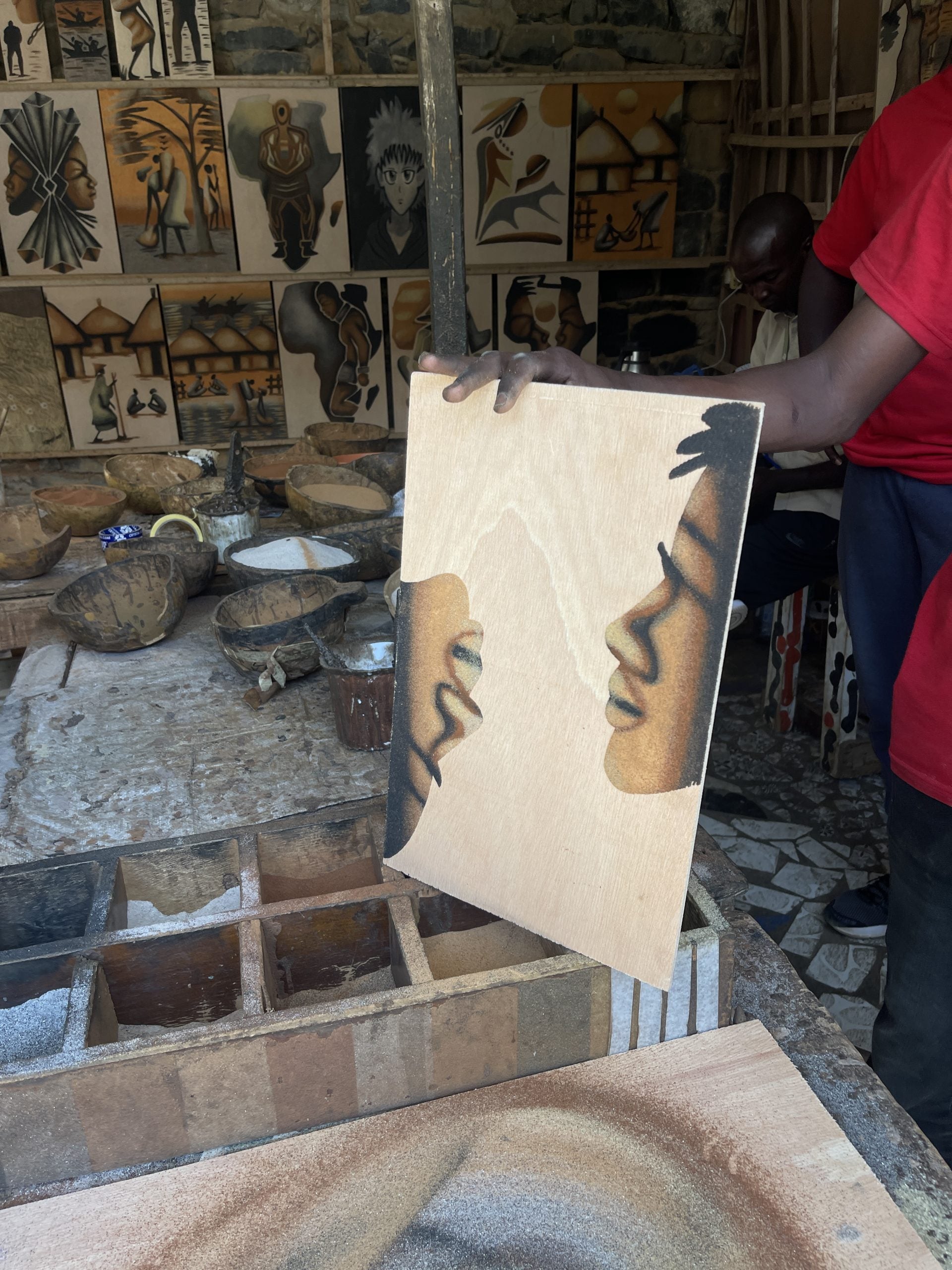
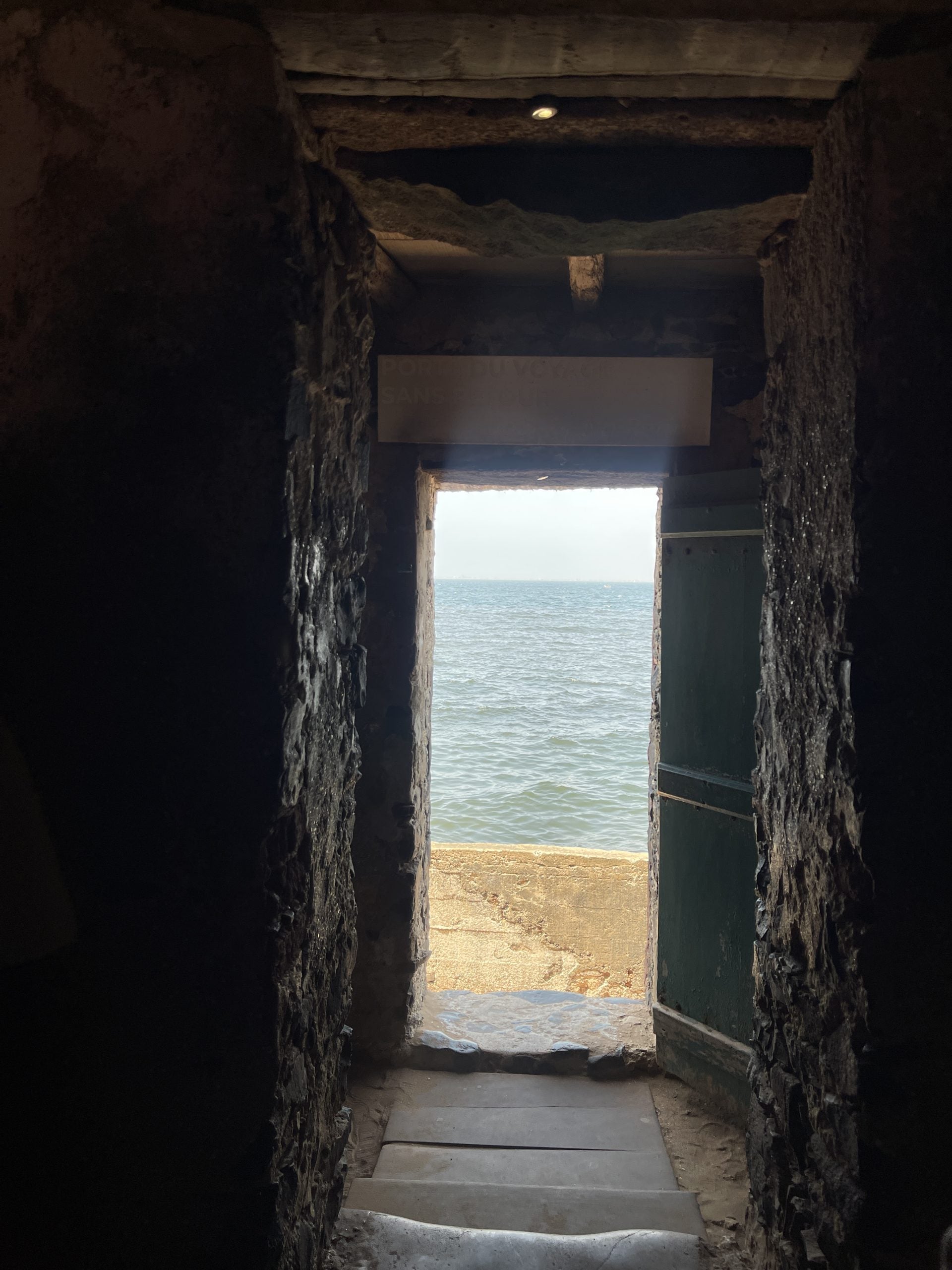
The most difficult day of our trip as we grappled with the fates of our ancestors. On the ferry to Goree Island—a former colonial settlement known for its role in the transatlantic slave trade, we braced for heavy times ahead. Our tour guide did not hold back when he took us around the island, stopping at different sites where the enslaved people were held captive. When he brought us to the House of Slaves, his words were delivered like a gut punch. We stood in the windowless caves where the enslaved Africans were kept in large numbers, their backs against the walls and with 10 kg balls chained to their feet. We saw where the children lived, separated from their parents as they waited to be put to work. We paused in the doorway of the Door of No Return, the final point for sick or “criminal” slaves, who were dumped in the ocean—never to be seen again. Walking on those grounds, I could almost hear the walls reverberating with their cries. It is a moment my mind will return to forever.
Today, the island is deeply impacted by this violent history, and yet, there is still beauty to be found, whether in the sand painting ateliers, art galleries or colorful fruit stands sprinkled throughout. With a heavy heart, we returned to the mainland and later traveled to N’Gor Island to catch the sunset and discuss the experience over our favorite meal of the trip—grilled fish at Restaurant Sunu Makane/Chez Seck.
Day 6 — May 20, 2024
On the agenda: Marché HLM, known as Dakar’s fabric town. The sprawling market abounds with stalls selling a diversity of local textiles, as well as fruit stands showcasing Senegalese produce—from hibiscus leaves to baobab and madd fruits. We quickly felt overwhelmed by the sheer number of vendors and sought refuge at Le Sandaga Boutique, where we perused stylist’s Khadija Aisha Ba’s beautiful curation of fashion accessories and home goods.
The rest of the day continued with a talk on shaping African identity through textile history at cultural center Raw Material Company, followed by a delectable meal at Restaurant Le N’Gor Pieds dans l’Eau.
Day 7 — May 21, 2024
As our time in Senegal drew to a close, we made the spontaneous decision to go to Saint Louis, the country’s former capital. Located within a four-hour drive of Dakar, the city has a lot in common with New Orleans as they were both colonized by the French and they inherited the architecture of colorful cottages. Here, the pace is slower but the creativity is just as explosive. Expect to see artisans turning threads into yards or molding sculptures out of recycled bike parts. One of the highlights of the trip was discovering Rama Diaw, a fashion shop boasting some modern African designs.

